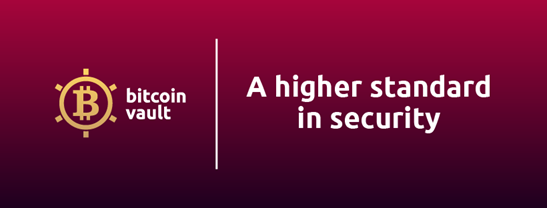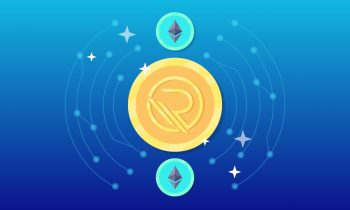
In this article, we will employ the expertise of crypto pioneer Eyal Avramovich to navigate through the four corners of this innovative world.
Eyal Avramovich is the founder of the security-focused cryptocurrency Bitcoin Vault (BTCV). As an early adaptor and successful entrepreneur, his years of experience have made him a specialist in the cryptocurrency field.
The cryptocurrency ecosystem has evolved into a world of its own over the past decade. Whether it be DeFi, NFTs, futures trading or ASIC mining, cryptocurrency has grown far beyond what Satoshi Nakamoto originally outlined in the Bitcoin whitepaper.
1. Mining
Mining is the first corner we will explore. It is the original way of obtaining cryptocurrency that involves solving complex cryptographic algorithms to verify and validate transactions on the blockchain. The people participating in this process, known as miners, compete to solve these algorithms. The miner who does it first is rewarded with newly created coins.
Crypto mining is where Eyal Avramovich first began his journey back in 2015. “In the early days, most miners used their personal computers for mining. But after years of expansion, the whole process became more demanding. It now requires advanced ASIC mining hardware that is extremely power-hungry and generates high electricity costs.”
The use of such advanced machines and the introduction of large-scale mining farms mean that individual miners can no longer compete with the industrialized crypto mining sector.
To participate in the mining process on a smaller scale, people turn to mining pools. They are online platforms that allow people to combine (or pool) their mining power. This way, they increase their chances of being the first to solve the algorithm. The coins rewarded to the pool are distributed proportionally among members depending on their contribution.
Mining is the validation process required for Proof of Work-based blockchains. The first cryptocurrency, Bitcoin has been using this method since its creation. But other cryptocurrencies employ different mechanisms to validate transactions. One of them is Proof of Stake.
Proof of Stake, unlike Proof of Work, does not require expensive and power-hungry mining hardware. It only needs participants to lock (or stake) the blockchain’s native cryptocurrency to validate transactions and distribute rewards.
The Proof of Stake method has become increasingly popular amongst developers and users alike within the crypto world. Some popular cryptocurrencies using a Proof of Stake-based mechanism include Cardano, Tezos, Atom and NEO.
2. DeFi
The most exciting corner of the crypto world now is undoubtedly that of decentralized finance (DeFi). “Decentralized finance refers to financial applications that exist on the blockchain. Traditional financial services, such as banking and commerce, rely on a centralized body acting as an intermediary for all operations. DeFi aims to become a completely decentralized alternative to these services,” Avramovich explains.
Through certain DeFi applications, users can stake their crypto assets in liquidity pools, which act as financial resource for them. They then receive a share of the fees and interest charged on the platform. It is a decentralized method that allows almost anyone to earn on their crypto in the same way that only banks and prominent centralized institutes have traditionally been able to.
Some of the most popular use-cases for DeFi applications include:
Decentralized exchanges. Usually referred to as a DEX, a decentralized exchange allows users to trade or swap their cryptocurrencies in a decentralized, peer-to-peer environment. The use of smart contracts and liquidity pools means that no intermediary is required and users retain full ownership of their assets. Popular DEXs include UniSwap and PancakeSwap.
Money markets. They are lending and borrowing platforms on the blockchain that allow people to act like the banks. Lenders deposit their crypto assets into their preferred market and earn interest from borrowers. Aave and Compound are two of the most popular lending and borrowing platforms in the DeFi space.
Yield optimizers. There are multiple ways users can earn interest in DeFi. Thousands of liquidity pools exist across various markets. However, for most users, it is difficult to determine which market to choose. This is where yield optimizers come in. They are platforms that automatically allocate the user’s funds to different markets for best gains. Popular yield optimization platforms include Yearn Finance and Idle.
The bulk of DeFi applications currently run on either the Ethereum blockchain or the Binance Smart Chain. This presented a problem for Avramovich and the Bitcoin Vault team as BTCV runs on its own blockchain. This meant that it cannot interact with applications in the DeFi ecosystem. The solution? A “wrapped” version of the coin. Wrapping a coin converts the coin to an ERC20 or BEP20 standard token, which users can utilize to participate in the Ethereum and BSC ecosystems.
“Wrapped BTCV (wBTCV) tokens can be created only when they are backed by BTCV. This ensures that the overall number of coins available on the market remains the same. The value of wBTCV should therefore always be pegged to BTCV at a 1:1 ratio,” says Avramovich.
3. Trading
Trading is the next corner we will explore. It draws much attention in the crypto world. Cryptocurrencies have a reputation for extreme price fluctuations. This was the source of many horror stories emerging in crypto’s early years as people lost their money through irresponsible trading and large-scale exchange hacks.
Eyal Avramovich reassures: “Such situations rarely happen now. But the cryptocurrency trading landscape has matured. Many reputable exchanges, such as Binance, are leading the way in offering advanced and highly secure trading markets.”
The following are the main types of trading markets offered by crypto exchanges:
Spot trading: This is the most basic form of trading. Users directly place buy/sell orders with their funds on the spot. It is good for beginners.
Margin trading: A form of trading where an exchange provides collateral to the user by a multiplier factor on a particular asset. The user can then place buy/sell orders using up to 20 times more than their initial deposit. This method has the potential for far greater rewards but can be risky for inexperienced traders.
Derivative markets trading: These are the trading contracts based on an underlying crypto asset. In simple words, derivative markets are speculative markets where users can bet on a crypto assets’ future price. It is the riskiest form of trading, where users can trade on derivative markets with a leverage of up to 100x of their initial deposit.
Derivative markets consist of two major categories:
- Futures: A contract to buy or sell an asset at a later date for a pre-determined price. Traders generally use these to hedge their investments trading in volatile markets.
- Options: A contract that allows the trader to buy or sell an asset at a set price by a particular time. It is often considered the riskiest form of trading in crypto due to the highly volatile and unpredictable nature of the market.
4. NFTs and gaming
Moving on from the seriousness of trading, we go to the fun corner of the crypto world – NFTs. The NFTs, or non-fungible tokens, represent an authentic item or content on the blockchain. Art, music, collectibles and more are all available in the form of NFTs.
“NFTs offer new opportunities for content creators, event organizers, collectors, gamers and almost everyone. They allow for the complete protection of intellectual property and give an indisputable claim of ownership,” Avramovich explains.
Marketplaces like Opensea and Rarible have established themselves as go-to platforms for everything NFT. And blockchains such as Wax have built entire networks optimized for NFTs. But the biggest market for NFTs is within blockchain games. Axie infinity and Alien worlds are two of the biggest blockchain games, offering in-game items or land of a varying rarity in the form of NFTs. Such NFTs can be sold on the market and, on occasion, sell for extremely high prices.
Most blockchain games still pale in comparison in terms of enormity to traditional video games (it is not possible to have games like Skyrim or GTA on the blockchain just yet). But they are slowly growing grander as the technology develops and they often employ a play to earn structure alongside the in-game NFTs on offer. This unique feature has allowed many people, especially in the poorer regions of the world, to live off playing such games.
You can keep track of all the most popular NFTs within the space using the OpenSea Non-Fungible Token tracker.
The cryptocurrency world is ever-expanding. With so many options available and new uses emerging regularly, there is always more to learn in this exciting field.
Eyal Avramovich and the team at Bitcoin Vault use their wealth of expertise and experience to keep on top of all the trends. And they continue to position BTCV to be one of the most innovative projects in the industry. \
Note: This article originally appeared on: Crypto Daily Gazette.
To find out more about BTCV, visit: bitcoinvault.global
BTCV social media pages:
Telegram: https://t.me/Bitcoin_Vault
Twitter: https://twitter.com/vaultbitcoin
Facebook: https://www.facebook.com/bitcoinvaultofficial
Instagram: https://www.instagram.com/bitcoinvaultofficial/
YouTube: https://www.youtube.com/c/BitcoinVault Vimeo: https://vimeo.com/channels/1690884
Anthony Young
Latest posts by Anthony Young (see all)
- Samuel Nathan Kahn (Manchester, UK) – Fit to Run Finance Firm - July 31, 2021
- Quarashi’s Ticks the All the Right Boxes… Anonymously - July 16, 2021
- JETT Lifts Off in Miami Launch - July 16, 2021







